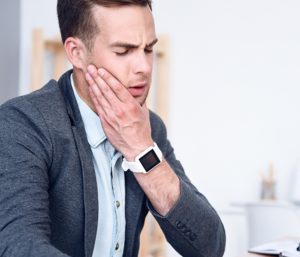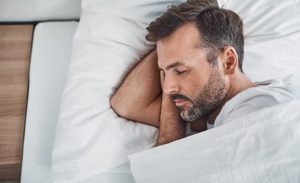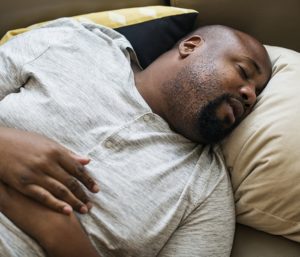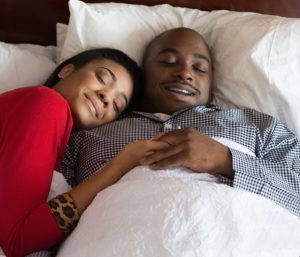AREN’T ALL DENTISTS THE SAME?
January 31, 2022
No two dental practices are alike! Each takes on the characteristics of the practitioner and the supporting team. Every office/patient interaction is the key to how that office “feels” when you walk in the door. Some practices may feel “clinical and efficient”, while others feel somewhat more home spun and laid back. This approach is often reflected in the office’s treatment preferences as well.
In my experience, all dentists will suggest what they feel to be the very best plan for any given patient. The differences between the treatment suggested by one dentist and that of another reflects that dentist’s preferences based on his or her experience. Thus, differing treatment plans do not necessarily reflect any deficiency in either dentist’s judgment.
I presented a complex case situation to a group of 15 dentists this past week. Even among this group of like-minded dentists, there were many different opinions as to how to approach this patient’s care. Some dentists said they would not do anything, while others offered very sophisticated treatment plans.
It is important to remember that there are numerous ways to treat the same situation, and it is always important for the dentist to tailor the treatment plan for each patient’s specific circumstances. A major part of those circumstances may be financial, and since different treatment plans can vary a great deal in cost, it is helpful if the dentist takes the patient’s ability to pay into account.
Think of treatment plans like various models of cars at dealerships. All of the models are new, have warranties and will work well out of the lot. The higher end models, however, have some advantages not found in the less expensive models. Some options add years to the life of the car. Some add to the appearance and enjoyment of driving it.
Dental treatment plans are like that too. Saving a badly damaged tooth with a root canal and a crown will preserve it for a long time, but it is a larger investment than the alternative extraction. Replacing a missing tooth may be done with an implant or fixed bridge (not removable), or a removable partial denture. One is a larger investment than another. The implant, for example, provides a more natural solution, but requires a higher level of care. A dentist should be able to explain the advantages and disadvantages of the various options, and allow the patient to make the decision.
All dentists who have graduated from an accredited dental school should be technically competent to perform any procedure that they personally feel comfortable with. But it is important to remember that each one is an individual, and no two dentists can perform exactly the same technical procedure in exactly the same way.
As a patient, you have no way to be able to judge the quality of the clinical treatment performed. Did it hurt? Does it look and feel good? Do I feel the investment was worth it? Those are the parameters most patients use to assess success. This starts with the trust in the dentist/patient relationship.
Over the years, I have developed a deep respect for those who practice dentistry. Many of my colleagues have impressed me with their technical abilities, and others with their communication skills. There are many great provider options for patients to choose from.
Dr. St. Clair maintains a private dental practice in Rowley and Newburyport dedicated to health-centered family dentistry. He has a special interest in treating snoring, sleep apnea and TMJ problems. If there are certain topics you would like to see written about or questions you have, please email them to him at jpstclair@stclairdmd.com
ONE THING LEADS TO ANOTHER
January 24, 2022
 Studies have shown a link between teeth grinding, clenching and headaches. There are also links to people who have sleep breathing disorders, and those who take serotonin uptake inhibitors (SSRI). Some brand names of these drugs are Celexa, Lexapro, Prozac, Paxil and Zoloft. Many people grind and clench their teeth for many different reasons – let’s not forget STRESS!
Studies have shown a link between teeth grinding, clenching and headaches. There are also links to people who have sleep breathing disorders, and those who take serotonin uptake inhibitors (SSRI). Some brand names of these drugs are Celexa, Lexapro, Prozac, Paxil and Zoloft. Many people grind and clench their teeth for many different reasons – let’s not forget STRESS!
For people who grind or clench, the muscles that open and close the jaw can become painful from overuse, causing a range of symptoms from tension to migraine headaches to jaw joint (TMJ) problems to tooth pain. Here is a simple test – look at your tongue in the mirror without sticking it out. Are the borders smooth? If they are ridged, you are probably doing something outside of normal function.
Bruxing (grinding) and clenching teeth is defined as abnormal tooth contact (parafunction). Ordinarily, teeth should only be in contact while eating and swallowing, which is about 10 to 15 minutes on a daily basis. People who grind or clench their teeth during the day, or while sleeping, can have their teeth in contact for as much as six hours a day or more. Researchers say that one night of grinding is equivalent to 80 days of normal wear. Read that last sentence again.
Clenching can be just as bad, and in some cases, worse than grinding. The average person puts about 200 lbs. of force on back molars during function, but a person who clenches can put up to 1000 lbs. on the molars. This is a lot of force for the teeth to withstand. Fractured teeth are seen on a regular basis in dental offices due to clenching. Typically, a person will come in saying that their tooth broke while they were eating something soft. While that may be the case, often times clenching and/or grinding has weakened the tooth prior to it breaking.
The American Dental Association estimates that 95 % of the American population suffers from a grinding or clenching problem at some point in their lives. Some people do so much damage over time that they need a lot of dentistry to restore their teeth back to normal function. The key is early diagnosis and treatment.
Many patients do not realize, and some refuse to accept the fact that there is a problem. The reason for this is because many, if not most, do not have symptoms. The masticatory system is a very adaptive and forgiving system. Some even think their symptoms are just normal. However, if a problem is identified, accepted, and treated, it can help prevent numerous potential issues down the road.
Therefore, successful therapy starts with acceptance of the pathology present. In addition to behavior modification, nighttime bite splints can be very effective. They should be worn every night, not just when it “seems” like you have been grinding or clenching. It’s like wearing a knee brace. You wear the brace to support the knee to help prevent more injury.
Some patients require daytime splints because their issues are affecting them during the day, and a “night” guard might not be enough. Over-the-counter appliances are typically not recommended for a variety of reasons.
Ask your dentist whether you have any of the signs associated with grinding or clenching, and especially talk to your dentist if you have any symptoms. If the reason can be identified as to why this happening, it will direct the provider to offering the best solution for your specific situation.
One last thought: Read the first paragraph over. In most people, there is a reason for the grinding and/or clenching. There is a lot of interconnectedness between sleep and other issues. Sometimes, if you fix one thing, other things go away.
Dr. St. Clair maintains a private dental practice in Rowley and Newburyport dedicated to health-centered family dentistry. He has a special interest in treating snoring, sleep apnea and TMJ problems. If there are certain topics you would like to see written about or questions you have, please email them to him at jpstclair@stclairdmd.com
IN SEARCH OF BETTER SLEEP – PART 2
January 17, 2022
 Last week I introduced Part 1 of “In Search of Better Sleep”. For this week’s column to make the most sense, I would encourage you to read that column first. It can be found at www.thetowncommon.com.
Last week I introduced Part 1 of “In Search of Better Sleep”. For this week’s column to make the most sense, I would encourage you to read that column first. It can be found at www.thetowncommon.com.
In case you don’t have a chance to read it, here is a brief recap: I have been involved in treating patients with sleep apnea for a few years. These are patients who have been diagnosed with sleep apnea by a physician, but were unable or unwilling to use a CPAP machine. The next line of defense to treat this progressive disease is a dental appliance which prevents the lower jaw from falling back during sleep. Despite all my education on this topic, I grew frustrated. Not only was I not treating as many patients as I wanted, I also had way too many patients, who I knew had issues, but would have a “normal” sleep study. I decided I needed more education.
Relatively speaking, the research in this area of medicine is early in its development. There is clear evidence that sleep disordered breathing affects more people in more ways than was thought in the past. As the research continues, more people will be able to be helped to breathe and sleep better.
Although there are many people with obstructive sleep apnea who need treatment, with either CPAP, a dental appliance, or some other form of treatment, there are many more people who have the same signs and symptoms as people with apnea and poor sleep, but they “pass” a sleep study. There is also a diagnosis called Upper Airway Resistance Syndrome (UARS), which is not talked about much. I’ll discuss this is a future column, but if you “passed” a sleep study (especially if you’re on the younger side) and have the symptoms of sleep apnea, UARS should be considered.
In most cases, problems related to the airway start very early in development, and progress throughout life to finally show up in a sleep study as apnea when a person is older. It is an evolutionary/developmental problem. Dentists have an extremely important role to play in helping to identify these issues in all phases of life, especially in children, where most of these problems begin. Identifying them early can allow intervention through orthodontics and other non-invasive therapy, and completely change the course of development, leading to a life of better breathing and better health.
For adults, because they have stopped growing and have signs and symptoms related to breathing issues, but would otherwise “pass” a sleep study, there is help available. Identifying those people, controlling the problems causing these issues, and offering ways to a more permanent resolution is where medicine and dentistry must grow together.
Sleep apnea is the end stage of this breathing disorder. Treatment for those with sleep apnea is typically either the “gold standard” of CPAP, wearing a mask on your face for the rest of your life, or wearing a dental appliance in your mouth for the rest of your life (although it may not work forever), or major surgery to fix the anatomy that is causing this progressive disease. The goal is to not get to the end stage of this disease.
As I learn and share more about this topic in the future, you will be amazed at some of the things that are related to breathing issues, such as ADHD, developmental issues, memory problems, TMJ pain, poor quality sleep, snoring, and a host of other things. While research in this area is ongoing, there is plenty of scientific evidence already out there to support this information. Breathe well.
Dr. St. Clair maintains a private dental practice in Rowley and Newburyport dedicated to health-centered family dentistry. He has a special interest in treating snoring, sleep apnea and TMJ problems. If there are certain topics you would like to see written about or questions you have, please email them to him at jpstclair@stclairdmd.com
IN SEARCH OF BETTER SLEEP – PART 1
January 10, 2022
 Almost ten years ago I took a weekend course at Tufts University School of Dental Medicine entitled “Sleep Dentistry”. This was not a course in putting patients to sleep for their dental work. This particular course was an introduction to treating people who had been diagnosed with sleep apnea (a sleep breathing disorder) by a medical doctor, and could not tolerate (or would not even consider) the use of the dreaded CPAP machine.
Almost ten years ago I took a weekend course at Tufts University School of Dental Medicine entitled “Sleep Dentistry”. This was not a course in putting patients to sleep for their dental work. This particular course was an introduction to treating people who had been diagnosed with sleep apnea (a sleep breathing disorder) by a medical doctor, and could not tolerate (or would not even consider) the use of the dreaded CPAP machine.
CPAP, which stands for Continuous Positive Airway Pressure, is a facial mask which blows air through the nose to create an “air stent” to basically hold the airway open during sleep. Patients with sleep apnea have been diagnosed with a progressive disease in which breathing is decreased at least 90% for more than 10 seconds multiple times an hour. Most people know someone who has been diagnosed with this disease, and either uses a CPAP machine, or cannot use it.
The “sleep dentistry” part of the equation is that for those who have been diagnosed with sleep apnea and cannot use the CPAP machine, the next line of defense is often a dental device. This is worn at night to hold the lower jaw slightly forward and not allow the jaw to fall back during sleep. Holding the lower jaw (mandible) forward brings the tongue muscle forward and helps to prevent the tongue from falling back in the mouth during sleep and obstructing the airway.
I was excited about this course I had taken at Tufts, and thought that I was going to start treating and helping countless people I heard about who were not able to tolerate, or didn’t want to use CPAP. The problem I found was that sleep apnea needed a medical diagnosis, which meant that patients had to have already had a sleep study with a physician, have failure in the use of CPAP, and then somehow find their way to my office. I was frustrated. I wasn’t treating that many patients, but knew (or at least thought), I must need more education.
So, I enrolled in a mini-residency program at Tufts for 8 months. This was a much more intensive program with heavy emphasis on the science behind the disease, which included more reading of scientific papers than I had ever done. The program was great, and I felt I had now “figured it out”. That was 4 years ago.
I was much more knowledgeable about things to look for in patients, and was referring many patients to physicians to be evaluated. Some patients would end up having a sleep study, be diagnosed with sleep apnea, go on CPAP, and then come back to my office and say, literally, “you changed my life.” There is no greater feeling than that. Even though I didn’t get to treat them with my fancy dental appliance, they were being treated for a disease that was slowly (or not so slowly) killing them.
There were also those patients who had the sleep study, were diagnosed with sleep apnea, were not able to (or didn’t want to) use CPAP, and were referred back to me for dental appliance therapy. Great!!! However, I quickly became frustrated again. Far too many patients, with classic symptoms such as snoring and daytime fatigue, were returning to me, saying they had a sleep study that showed they did not have apnea. Now what?
I’m a dentist, not a physician. Sleep problems are medical problems and need a medical diagnosis. And, although I knew that many of these patients may have sleep issues that were out of my control as a dentist (there are over 100 sleep disorders), many of these patients had dental signs such as wear on their teeth, grinding and/or clenching problems, TMJ pain, and other anatomic issues that I had learned about that were likely related to breathing problems.
…….continued next week
Dr. St. Clair maintains a private dental practice in Rowley and Newburyport dedicated to health-centered family dentistry. He has a special interest in treating snoring, sleep apnea and TMJ problems. If there are certain topics you would like to see written about or questions you have, please email them to him at jpstclair@stclairdmd.com
2022 – THE YEAR FOR BETTER SLEEP
January 3, 2022
 Happy New Year! As most of us are back from a few extra days off, time marches on and our daily routines are back in full force. One of the things reinforced with me during my short break was how important sleep is.
Happy New Year! As most of us are back from a few extra days off, time marches on and our daily routines are back in full force. One of the things reinforced with me during my short break was how important sleep is.
My body has become accustomed to a certain amount of quality sleep. I have always had difficulty sleeping past a certain time in the morning, regardless of what time I go to bed. On the days over this holiday period that I stayed up later than I normally do, my amount of sleep hours was less and my quality of sleep tended to be lower. This had an impact on the way I felt the next day. Sleep “hygiene”, including regular bedtime, is so important.
There are many reasons for poor quality sleep. Everything from a poor mattress, poor pillow, sleep position, medical issues, diet, alcohol consumption, and work schedule can have an impact on the quality of sleep that we get. Although some people can notice subtle changes in sleep quality, many others do not realize that some of the issues they have routinely can be caused from poor sleep quality.
Sleep plays a vital role in good health and well-being throughout our lives. The way you feel while you’re awake depends in part on what happens while you’re sleeping.
Sleep helps your brain work properly. Studies show that a good night’s sleep improves learning. Studies also show that sleep deficiency may cause you to have trouble making decisions, solving problems, controlling your emotions and behavior, and coping with change.
Sleep plays an important role in your physical health. For example, sleep is involved in healing and repair of your heart and blood vessels. Ongoing sleep deficiency is linked to an increased risk of heart disease, kidney disease, high blood pressure, diabetes, stroke, sexual dysfunction, ADHD, obesity and depression.
Sleep issues can affect the young, the old and everyone in between. The many changes that take place in our bodies as we age can increase the risk of sleep disorders.
Sleep apnea is one of many sleep disorders. It is a serious, potentially life-threatening sleep disorder that affects approximately 18 million Americans. It comes from the Greek meaning of apnea which means “want of breath”. People with sleep apnea have episodes in which they stop breathing for 10 seconds or more during sleep.
People with sleep apnea usually do not remember waking up during the night. Some of the potential problems may include morning headaches, excessive daytime sleepiness, irritability and impaired mental or emotional functioning, excessive snoring, choking/gasping during sleep, insomnia, or awakening with a dry mouth or throat.
Some simple questions to ask yourself are: Have you been told that you snore?
Do you often feel tired, fatigued, or sleepy during daytime?
Has anyone ever told you that you stop breathing while you were asleep – or- Have you ever woken yourself up with a gasp?
Do you have high blood pressure or are you on more than one medication to control high blood pressure?
Is your body mass index greater than 28?
Are you a male with a neck circumference greater than 17 inches or a female greater 16 inches?
If you answered yes to more than two of these questions, or if there is anything else in this column that makes you believe you may not be getting the quality of sleep you would like, please discuss these with your physician.
Dr. St. Clair maintains a private dental practice in Rowley and Newburyport dedicated to health-centered family dentistry. He has a special interest in treating snoring, sleep apnea and TMJ problems. If there are certain topics you would like to see written about or questions you have, please email them to him at jpstclair@stclairdmd.com







